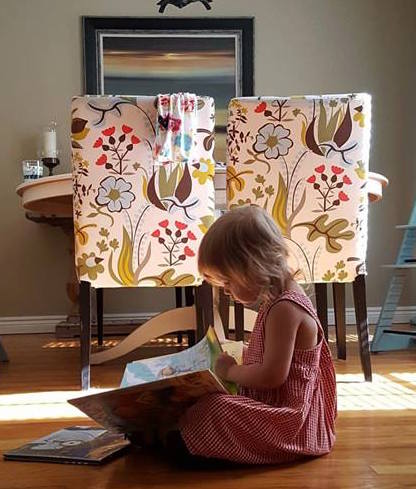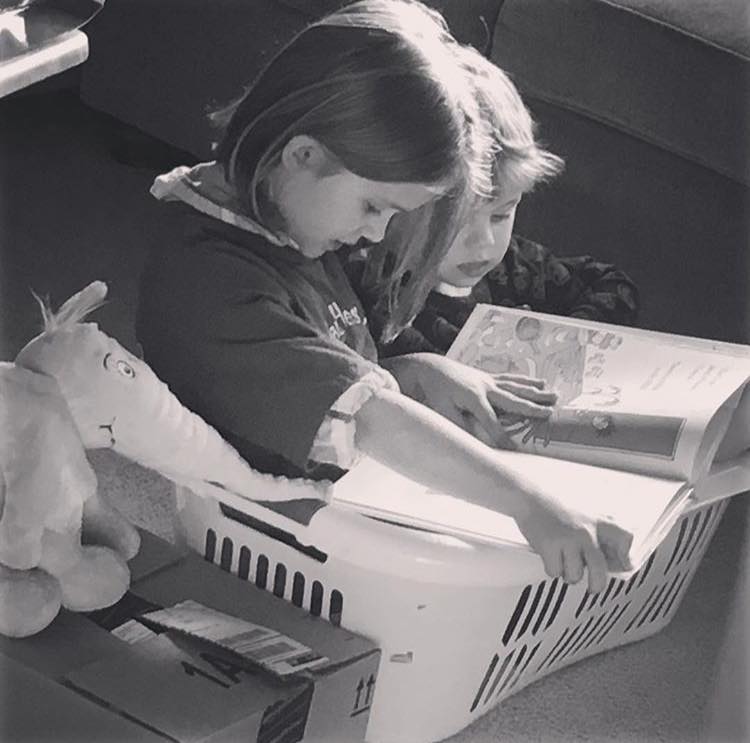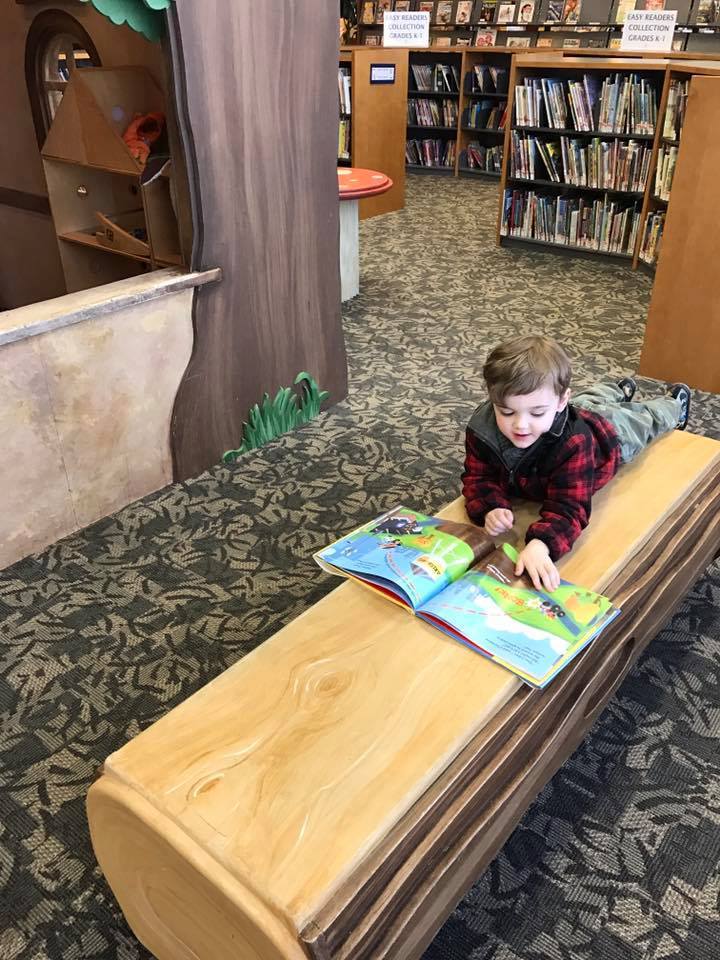You are your child’s first and most important teacher, and your most important assignment to prepare them for school is read, read and read some more! As I mentioned in my first DIY Preschool post, if you do nothing else to incorporate preschool into your days at home, read! I can truly say as a former Kindergarten and First Grade teacher reading at home has a tremendous impact on your child’s readiness to learn to read. DMB has had some great posts in the past about reading, including this one on tips to encourage reading at home. The good news is there is nothing fancy or complicated you need to do together, all you need to do is cuddle up and enjoy a story with your little one, and incorporate a few of the following tips.

Use the Pictures
From an early age, you can ask your child to point to things in the book you’re reading together, for example, “point to the dog on this page.” As children get older, you can ask them more advanced questions, “can you find the page where Max gets in the boat?” or “what on this page shows us it’s about to rain?” Using the pictures in a book is a very important skill once children start reading, and teaching them to notice and reference illustrations early is a great tool to have in their reader’s toolkit!

Ask Questions
It’s easy to go into autopilot when reading, but asking your child questions about the story is a great way to build their comprehension skills. Yes, reading the actual words is important, but understanding and interpreting what you have read is equally important, and something that will be assessed on a regular basis in elementary school. Frequently ask your child what they think will happen next in a story, what they think characters are feeling, and what they think about what is happening. When you’re done reading, ask them to retell the story to you, or what their favorite part was.

Read Familiar Books
It may be maddening to read the same story for the hundredth time in a row, but showing a desire to read a favorite story over and over is a sign of a growing reader! Reading familiar and favorite books helps children understand patterns and story concepts in books, a very important concept for learning to read! Switch things up when you can by encouraging your child to “read” their favorite book to you, using the pictures to tell the story, and offer lots of praise when they do! Embrace and enjoy the reading of favorite books, while also throwing new ones into the mix when you can.

Extend the Story
Take that favorite story one step further, and strengthen your child’s reading skills even more! Ask them to draw a picture of their favorite part or character in the story. Make puppets of characters and use a cardboard box to make the scenery and put on a puppet show. Cook something yummy the characters were eating in the story. A quick Pinterest search of most popular children’s books results in lots of fun ideas for activities to take the story further, all while strengthening your child’s comprehension skills and love of reading!

Storytime at the Library
Sometimes it’s nice to let someone else take over, and your local librarian is the perfect person to help support your child’s developing literacy skills! Your local library likely has a storytime just right for your child’s age, and it’s free! If your local library’s story time doesn’t work for your schedule, see if another neighborhood nearby has a story time that will. Some storytimes require registering, but many do not, and it’s possible to hop in and join when you can. While you’re at the library don’t forget to check out a few books to enjoy at home, and include your child in the selection process.

What if my kid HATES to read?
Some children would rather do just about anything else than sit down and read a book, and that’s OK. For these kids, try finding books about one of their interests and see if that helps motivate them to read with you, or explore books independently. Your local bookstore or librarian can help you find great books for your little princess, dinosaur or truck enthusiast. Books that feature different textures and lift and peek flaps can also be enticing, and reading books in your silliest voice may also draw in a reluctant reader. Giving books a try at times other than bedtime may help, snack and meal times and long rainy afternoons are good opportunities to try. And if nothing seems to be working, have faith and try again another day in another way. The fact that you’re trying sends the message to your child that reading is important and valuable, which is a great lesson.









